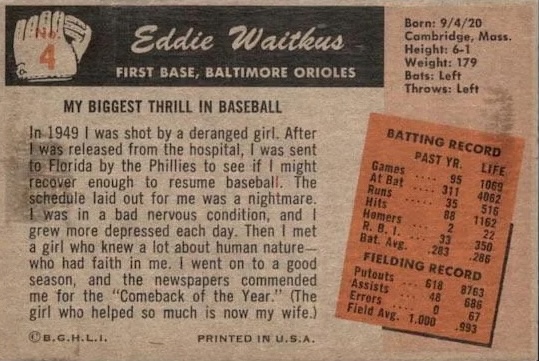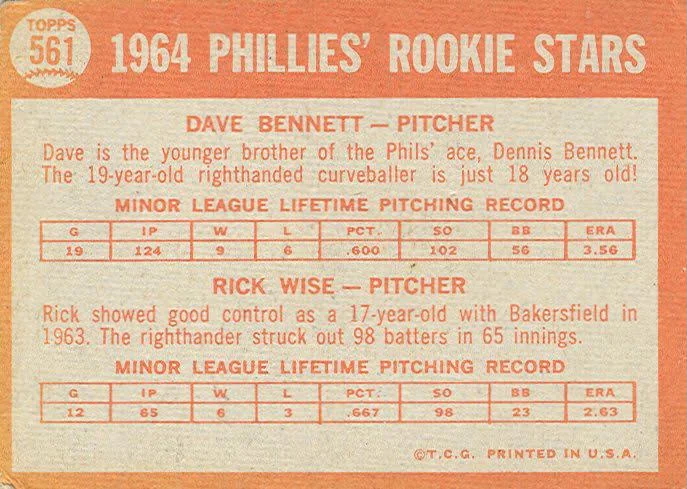Using the baseball card method to understand your strengths and weaknesses.
Using the baseball card method to understand your strengths and weaknesses.
What’s on the back of your baseball card? Like me, you probably never played professionally, but you might have heard of the old baseball idiom, “look at the back of their baseball card.”
It usually comes up when discussing a veteran ball player’s current struggle at the plate, and coaches, commentators, and fans turn to past performance to gauge potential consistency.
If you’re not a collector (I spend way too much money on cards as a human adult male), cards usually include data like batting averages, home runs, RBIs, and other stats for each year a player has been in the big leagues. Using the perspective of “looking at the back of their baseball card,” you get a sense of a player’s typical performance level – their track record of what they bring to the game year after year.
Of course, while this information can provide valuable context, it’s not always a guarantee of future performance. A player could suffer an injury, age might catch up with them, they might be stuck on a bad team, or countless other factors could affect their game.
But looking at the back of their baseball card gives you a realistic sense of what that player typically delivers, season after season.

So I ask again: What’s on the back of your baseball card?
Just as baseball cards capture a player’s statistical story, we each carry our own invisible card that tells the story of our professional and personal performance. The difference is that unlike baseball players, most of us never take the time to honestly assess what our “stats” really look like.
Building your own picture—not as a player, but as a person—means painting an accurate breakdown of your strengths, weaknesses, and overall capabilities. This isn’t about self-promotion or harsh self-criticism; it’s about developing the kind of honest self-awareness that successful people use to make better decisions about their careers and lives.
When scouts evaluate a player, they don’t just look at one spectacular game or one terrible slump. They examine patterns over time. What does this player consistently deliver? Where do they excel? What are their blind spots? How do they perform under pressure?
The same principle goes to understanding yourself. Your personal “baseball card” should reflect your consistent patterns of behavior, your reliable strengths, and yes, your predictable weaknesses. This isn’t about dwelling on limitations – it’s about gaining the clarity to make strategic choices.
Maybe your card shows that you’re exceptional at building relationships but struggle with detailed analytical work. Perhaps you consistently deliver creative solutions but have a track record of missing deadlines. Or you might discover that you perform brilliantly in crisis situations but get restless during routine periods.

Unlike baseball statistics, personal strengths and weaknesses aren’t always quantifiable, but they can be identified through honest reflection and feedback.
Asking yourself:
What do colleagues consistently come to you for help with? These repeated requests often reveal your natural strengths. What types of projects energize you versus drain you? Your energy levels are excellent indicators of where your talents lie.
Look at your track record across different roles and situations. Where have you consistently succeeded? Where do you tend to struggle? What feedback do you hear repeatedly, both positive and constructive?
The goal isn’t perfectionism – even Hall of Fame baseball players have weaknesses. Aaron Judge struck out more than most players, but he also hit more home runs. The key is knowing what your numbers really are.
Here are some of my stats:
Strengths:
Weaknesses:

Once you understand what’s on the back of your baseball card, you can make more intentional choices. You can seek roles that leverage your strengths, build teams that complement your weaknesses, and set realistic expectations for yourself and others.
Most importantly, you can stop pretending to be a player you’re not. If your card shows you’re a consistent singles hitter, you can focus on getting on base rather than swinging for the fences. If you’re a power hitter with a tendency to strike out, you can work on improving your consistency while still leveraging your ability to hit home runs.
The back of your baseball card tells your story – but only if you’re honest enough to read it. Take the time to understand your patterns, acknowledge your reality, and use that knowledge to play to your strengths while managing your limitations.
After all, the best players aren’t those without weaknesses; they’re the ones who know exactly what their weaknesses are and have learned to work around them.